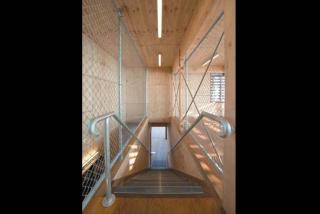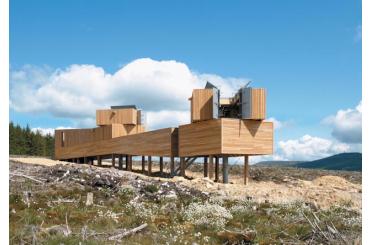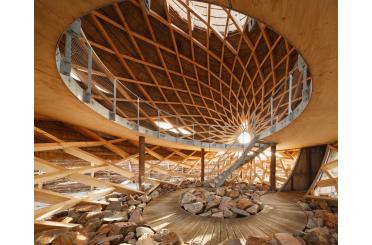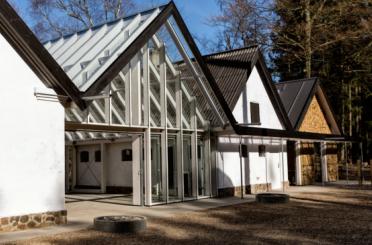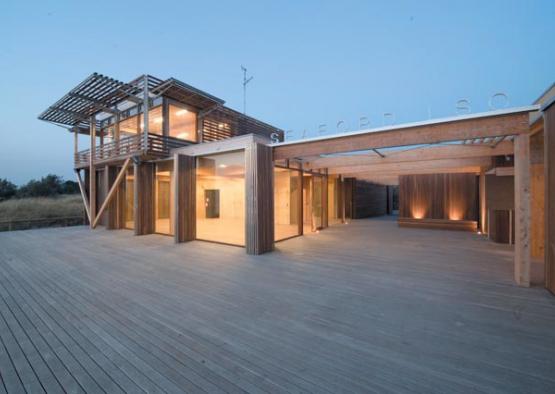
Overview
The strong ambitions of the client (Frankston City Council) and its strict budgetary constraints led to an attitude towards building and detailing that accepted the rawness and forthrightness of timber, and its beautiful qualities.
The design features intentional overlaps between spaces and the adjacent interiors, and a concern for view-lines and visual layering that becomes clear only by seeing through spaces into others and beyond into the (cropped) distance.
The screens create an additional skin, to curb vandalism when the club is not in use, act as a buffer against cold winds, filter unwanted summer sun and, in tandem with the glass behind, guide valuable cross-ventilation throughout internal spaces. They are an important component of the passive thermal control system and act as 'gates' -marking open and closed sections of the building. The screens are clad in spotted gum, and, when fully closed, allow light into the interior spaces through narrow gaps.
Materials were chosen for their durability in coastal conditions, plainness and affordability - resulting in structural timber and with marine-grade stainless steel connectors to minimise the costly use of steel and the potential for corrosion. Steel screw pilings minimise interference with the natural sand dunes, resulting in a raft of decking upon which the buildings rest.
Case Study courtesy of timber+DESIGN international magazine.
Structure
Widespread use of timber also highlights the fundamental spatial characteristics of the buildings, and provides a neutral backdrop for the contrast between shadow darkness and bright beach light.
The interiors, with their sense of 'exterior', are lined with plywood; balustrades are replaced with steel mesh cyclone fencing, juxtaposing the natural, workmanlike plywood lining.
External materials include naturally durable spotted gum as cladding and decking, and white cedar engineered structural timber for columns and beams on a platform of stainless steel screw piles. Selection of spotted gum for both vertical and horizontal surfaces allows the building to read as a complex container - operational as the users require, or sealed and impervious during closed hours.
To further obscure the difference between interior and exterior, the spotted gum internal flooring was left unpolished to match the exterior decking, allowing the internal floor to grey-off and weather over time.
These new facilities have helped increase membership and improved the club's visibility and operation through distinctive design and new location of a mezzanine lookout area. With a modest budget, the client and architect have created a vital landmark and community focal point.
Interior
The 'rawness and forthrightness' specified in the design brief are especially evident inside the building where the natural 'feel' of timber is used throughout on floors, walls and ceilings.
There is a cultivated sense of deep space running through the north/south axis, with shaded spaces looking out on the sun-bleached exterior. Detailing is carefully designed to be direct and easy to build; junctions and lines are exposed in an unfussy manner consistent with the buildings use and the barefoot beachside manner of the members.
C/D-grade plywood was deliberately selected for its imperfections and its affordability, and structural steel plates were designed to be exposed to emphasise the connection of timber to timber.
Environmental considerations were reflected in the choice of engineered timber instead of marine-grade structural steel to reduce embodied energy and a non-toxic combination of linseed oil and citric acid was used to seal all timber finishes. Materials can be reclaimed at the end of the building's lifespan.
